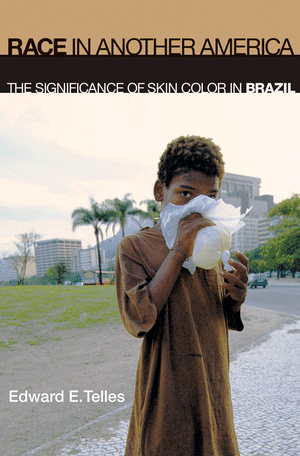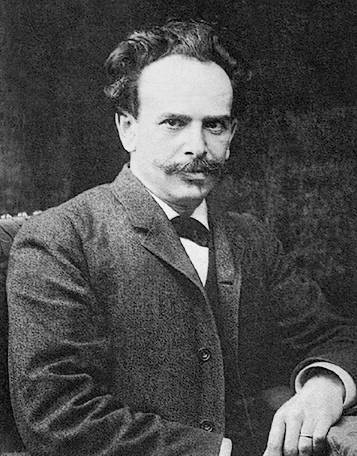Race in Another America
Joe Webb, American Renaissance, September 5, 2012
Edward E. Telles, Race in Another America: The Significance of Skin Color in Brazil, Princeton University Press, 2005, 336 pp.
Edward Telles, a professor of sociology at Princeton, has written a useful book that blows the whistle on Brazil’s “racial democracy” and the claim that the country has somehow solved problems that baffle the rest of us. Prof. Telles calls for greater honesty in describing the race question, but his proposed solution — quotas — would only light the fuse for greater conflict. His basic position is that genetic explanations for race differences have been refuted and that inequality is a product of culture. His descriptions of Brazilian society thoroughly debunk the image of harmony.
The myth is that miscegenation solved the Brazilian race problem. Mixing between Portuguese migrants — almost all of whom were men — and blacks produced a roughly half black-and-mulatto and half white population that supposedly gets along without friction. The mulatto is the national symbol.
Brazilian history is, indeed, very different from US history. The Portuguese came without women and brought about seven times as many black slaves as were imported to the United States. Slavery was not ended until 1888.
Because there were so many blacks in Brazil, in the 1880s the government actively recruited white immigrants. This led to a literal “whitening” of the country, and whites argued that sustained miscegenation would improve the black racial stock. This notion of improvement-through-whitening remained in force for at least a century and is still commonly believed, much to Prof. Telles’s dismay.
Miscegenation theory gave the Brazilian eugenics movement a unique character. At the First Brazilian Eugenics Conference, held in 1929, there was vigorous debate about whether race mixing with blacks led to degeneracy. Franz Boas himself showed up and claimed that miscegenation was normal and healthy, and that eugenics had nothing to do with race. A Brazilian eugenicist, Fernando Magalhaes agreed, claiming, “We are all Mestizos!” The Brazilian eugenics conference went on to endorse miscegenation, thus distinguishing itself from eugenics elsewhere in the world. The myth of racial democracy, with the mulatto as its national symbol, would persist for another 60 to 70 years.
In the 1930s, popular social commentator Gilberto Freyre continued to celebrate miscegenation. Freyre and his colleagues believed racial inequality was an artifact of slavery and culture, and would disappear with time. In the 1950s this theory was expanded by the Marxist sociologist Florestan Fernandez, who argued that labor market competition would end racial inequality because careers would reflect merit. Whites would resist equality, but capitalism would create opportunities for advancement, and whites would have to accept mulattos and blacks.
From 1940 to 2000, European immigration decreased, and the percentage of whites fell from 64 percent to 54 percent. Mulattos increased from 21 percent to 43 percent, and blacks declined from 15 to 5 percent. Clearly there was miscegenation by whites, but mostly by the bottom fifth of the socio-economic scale, and mostly with mulattos rather than blacks.
With more whites of both sexes available for marriage, whites in the middle-class and higher turned their backs on miscegenation, leading to a de facto color line. This led, in Prof. Telles’s words, to “marginalization of blacks and browns,” and made it harder to maintain the myth of racial democracy. The myth staggered on into the mid-1990s, but came under increasing attack from black activists and scholars like Prof. Telles. He spends 270 pages telling us that there is terrible inequality in Brazil, which must be ended through strict employment quotas, and penalties for discrimination.
Race in Brazil today
The south of Brazil is majority white, and the north is predominantly black and mulatto. In most areas there is residential self-segregation; even the favelas, or slums, are segregated. Prof. Telles notes that “color differences between . . . two poor neighborhoods show that class alone may not explain spatial segregation,” but he does not speculate as why the races would separate. Nor does he explain why there is self-segregation between blacks and mulattos.
Although there was a “black soul” movement in Brazil beginning in the late 1970s, the country had nothing like the civil-rights disturbances that wracked the United States. In 1964, Congress passed the Civil Rights Act, which banned discrimination in employment and public accommodation, but Brazil did not get equivalent laws until 24 years later. In 1988 — 100 years after emancipation — a new constitution proclaimed an era of racial equality by making “the practice of racism . . . subject to imprisonment,” and laid the groundwork for hundreds of local anti-discrimination laws.
These laws, however, are rarely enforced; Prof. Telles cites only three cases in 10 years. This appears to be the Brazilian way: lots of laws and much talk, but little or no enforcement.
Prof. Telles draws a distinction between vertical and horizontal inequality. The vertical has to do with jobs, money, status, education, etc., while the horizontal is socializing and even marrying across racial lines. Prof. Telles tells us that despite more horizontal equality than in the United States, vertical inequality remains severe.
Prof. Telles says that according to US Department of Labor statistics, in 1960, an American white man was three times more likely to have a “professional” job than a black man but that by 1996, the differential had dropped to 1.6. For women, the white advantage declined from 2.8 to 1.4. American racism is therefore held under tenuous control through race preferences and quotas.
In Brazil, Prof. Telles tells us, the gap between whites and blacks-and-mulattos has increased. He says this is due to a racial hierarchy devised and enforced by whites for their own benefit: “Race relations depend on how persons are categorized, a process in which more powerful persons ascribe and impose categories on others.” Many non-whites have internalized this hierarchy and use color to navigate Brazil’s racial labyrinth. The result, says Prof. Telles, is a “discriminatory glass ceiling” that “prevents them from entering the middle class.”
And yet, if Brazilians have succeeded in establishing a fair measure of “horizontal equality,” why wouldn’t whites hire non-whites they know and like? According to Richard Lynn, the average IQ in Brazil is 87. If this figure is accurate, and whites are 53 percent of the population, we can calculate the average non-white IQ. If the white average is 100, the non-white average is 72. If the white average is 95, the non-white average is still no more than 78. As they do in the United States, racial gaps in achievement no doubt reflect racial gaps in ability.
As for miscegenation, it now appears to be more myth than reality. Prof. Telles describes a system of exchange in which status, money, and skin color are all carefully evaluated in the marriage market, with very little left of the romance of the racial-rainbow utopia. Everyone wants to marry light-skinned women, and Prof. Telles depicts painful scenes of the blackest of women who are left on the shelf.
There appears to be as much racial hypocrisy in Brazil as in the United States, with whites telling pollsters they have integrationist beliefs, but acting differently. The issue of implicit versus explicit racism is the same in both countries.
Despite the myth of the mulatto nation, the Brazilian reality is that blacks are at the bottom with whites at the top. Prof. Telles says the increasing distance between the races is most apparent in a “growing gap in college attainment.” Brazil is supposed to be booming, but its per capita GNP of about $12,000 is hardly shared equally. As mulattos and blacks fall further behind, there is only the barest welfare system for them.
The word “crime” does not even appear in Prof. Telles’s index, but it is a serious problem in Brazil. The homicide rate, at 26 per 100,000, is more than five times the US rate of 4.7. Gang violence, drug cartel killings, and street crime are common, especially during Carnival. Police have long been accused of simply shooting down black and mulatto street urchins.
Prof. Telles’s solution for these problems is clear: a kind of Great Leap Forward through quotas and systematic racial preferences. There have been attempts at racial quotas in Brazil, especially in universities, which can accommodate only a few who would like to attend. This appears to be more a measure forced on the country by elites rather than a response to strong demand from non-whites, but anything like the ruthless quotas Prof. Telles recommends would surely send the country into convulsion.
Like many observers of Brazil, Prof. Telles reports less racial rancor than in the United States, despite yawning economic gaps. Could it be that this is because Brazilians grasp the reality of racial differences? Prof. Telles complains that “while nineteenth century scientific theories of white supremacy have since become discredited, such ideas remain deeply embedded in social thinking in Brazil.” If they are “deeply embedded,” it could mean people quietly accept race differences in ability and unequal outcomes. The relative social peace that is built on acceptance of differences would be destroyed by policies that assume an equality that most people know if false.
Whatever the case, the concept of an idealized “racial democracy” is dead and gone. Brazil has a race problem, just like every other multi-racial country. Its ways of dealing with it have sometimes differed from those in the United States, but Brazil’s history confirms that there is no way to avoid the tensions that arise when races of significantly different levels of ability try to live together.

















